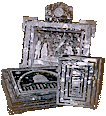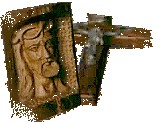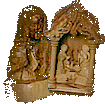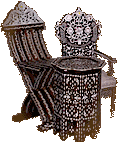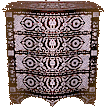Amazing
& Historical
Sites
| Salt |
|
|
| Amman |
|
|
| Wadi Rum |
| River Jordan |
| Desert Castles |
| Mount Nebo |
| Decapolis |
| Um Qais |
|
|
| Jerash |
| Kerak |
|
|
| Jordan's Map |
| Jordan's Flag |
| More Info. |
The Jordan River & Al-Maghtas
The spot where Jesus was Baptised
J ordan is a modern country, a holy river, and an ancient culture, a timeless physical and spiritual panorama of prophets, miracles, and human faith. The very name of the country JORDAN retains the unique baptizmal aura of a
holy river and a blessed land. God's command of righteousness and his promise of eternal love and peace through faith are deeply etched into the earth and memories of Jordan. Visitors and citizens daily walk through the plains, valleys, hills, mountains and streams whose names were forever fixed into human consciousness by the simple deeds and the profound messages of prophets: Abraham, Moses, Lot, Aaron, Elijah, Joshua, Jesus, John the Baptist, and others who walked this land and crossed its river during their missions on earth. Many of the sites where they performed miracles or reached out to ordinary people are identified, excavated, protected and easily accessible to visitors. For a religious pilgrimage or touristic visit to the Holy Land of Jordan, the Bible is more than a document of faith, it is also a gazetteer and a virtual road map of ancient places, people and events associated with this serene and spiritual land.
Meandering through the Jordan Rift Valley is the River Jordan, a sacred stream of numerous symbols and historical events. The Prophets Joshua, Elijah, Elisha, John the Baptist and Jesus Christ all crossed it during their lifetimes. The area alongside the river associated with their deeds, just 45 minutes by car from Amman is easily accessible to visitors once again, thanks to new facilities and the impact of the Jordan Israel peace accord of 1994.
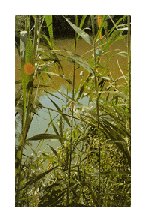
The large loop in the Jordan River opposite Jericho has long been identified as the spot where Jesus Christ was baptised by John the Baptist. It is called Al-Maghtas in Arabic. The importance of Al- Maghtas returns to the worlds preparations for celebrating the third millennium of the birth of our Lord Jesus Christ. In the meantime the Jordanian archeological department is occupied with the completion of exploring this historical and religious site. Furthermore, Al-Maghtas is clearly located on the mosaic map found in Madaba church near Mount Nebo, which was discovered in the middle of the sixth century.
Less than two kilometers east of the river is another important place associated with the lives of Jesus and John the Baptist - the settlement of Bethany, where John lived and baptized. John 1:28 refers to it as "Bethany beyond the Jordan, where John was baptizing." In John 10:40 it is mentioned as the place to which Jesus fled for safety after being threatened with stoning in Jerusalem: "Then Jesus went back across the Jordan to the place where John had been baptizing in the early days."
This settlement beyond the Bethany has recently been identified on the south bank of the small perennials stream named Wadi Kharrar, just east of the Jordan River and opposite Jericho. It is being excavated, protected, and made accessible to visitors. The small natural hill forming the core of Bethany is called Elijah's Hill, or Tell Mar Elias in Arabic. Local tradition for thousands of years has identified it as the place from where Elijah ascended to heaven. Bethany's ancient remains include
structures from the first Century AD settlement of John the Baptist, including large plastered pools with steps for full immersion. The 5th - 6th Century AD remains at Bethany are those of the Byzantine period settlement, also called Ainon or Saphsaphas and depicted on the 6th Century Madaba mosaic map of the holy land.
When Jesus spent 40 days in the wilderness after his baptizm (Mark 1:12), he may well have been in the stark, desolate marl area immediately east of Jordan River and north of Bethany. He spread his message throughout Transjordan on several different occasions, including during his last journey from Galilee to Jerusalem (Matthew 19).
Click on these Pictures
|
|
|
For US$ 70.00 Only |




